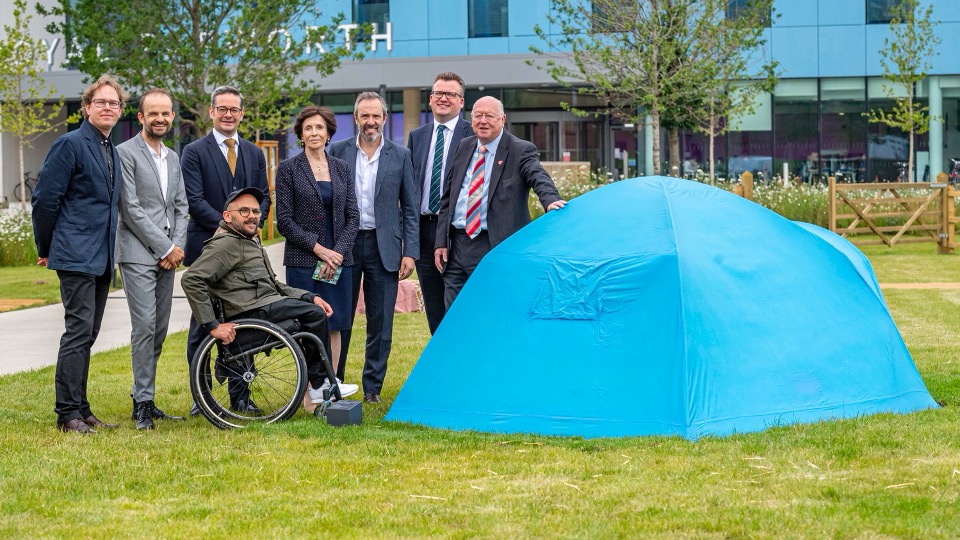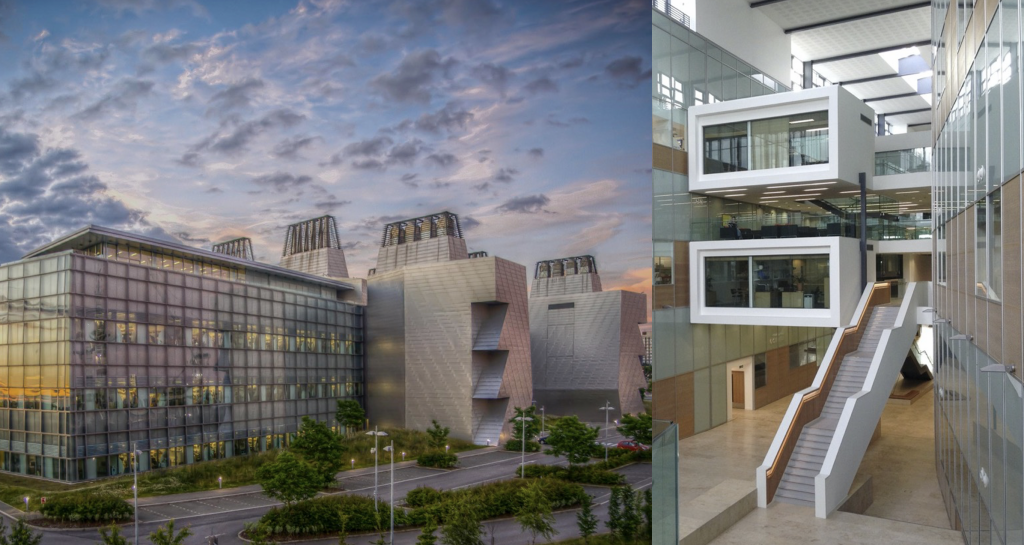Andy Robinson, Head of Strategy. Futurecity
Over the last decade Futurecity has championed the transformative power of the arts and embedded the arts alongside science at the heart of some of the UK’s finest research and healthcare facilities.
This is not about artists illustrating science. It’s about artists and scientists creating new insight and solutions together, whether for research, public engagement, patient and staff wellbeing, or creating time and space to think and feel differently.
By collaborating with experts with a completely different viewpoint, we see our subject through a different lens……re-evaluate our own motivations and interactions and refresh our interest for the core subject — eradicating one of the major challenges of humanity.
Julian Rayner, Cancer Research UK scientist
Over the last 10 years we have been able to conceive 3 long-term arts & health strategies, commissioning over 15 artists to work at the heart of several of the UK’s newest healthcare environments.
Cambridge Biomedical Campus
In 2010 Futurecity began working on Europe’s largest centre of medical research and health science; Cambridge Biomedical Campus, home to over 20,000 employees across two NHS hospital trusts and over 40 education, university research, industry, and development organisations. We conceived a comprehensive public art strategy for the 28-hectare campus expansion, on behalf of the developer partners Liberty Property Trust and Countryside and the City of Cambridge. The aim was to embed arts and culture within the campus’ public realm and inside the research labs, patient treatment rooms, and staff areas.

Festivals and Village Greens
The campus works hard to bring its numerous organisations together, and we were able to replicate this effort through a Public Art Steering Group. It established valuable dialogue between healthcare, scientific research, and Cambridge’s contemporary arts expertise via Wysing Arts Centre and Kettle’s Yard. A shared ambition saw an international competition for artists to lead the creation of a new central public realm for all campus users. Proposals ranged from colourful canopies, to forests, to festivals, and it was the latter, by Ryan Gander that caught the groups attention and led to the creation of The Green and The Gardens as a green healing space for all campus users. Ryan collaborated with Gillespies landscape architects to realise a space for respite, social play and escape; a space to help people imagine their way out of the situations they might find themselves in or dream up new ideas through chance encounters. Sculpture, planting and lighting combine to create the playful landscape that pulls in the surrounding countryside and prioritises wellbeing. More on the project with Ryan via the CBC website.
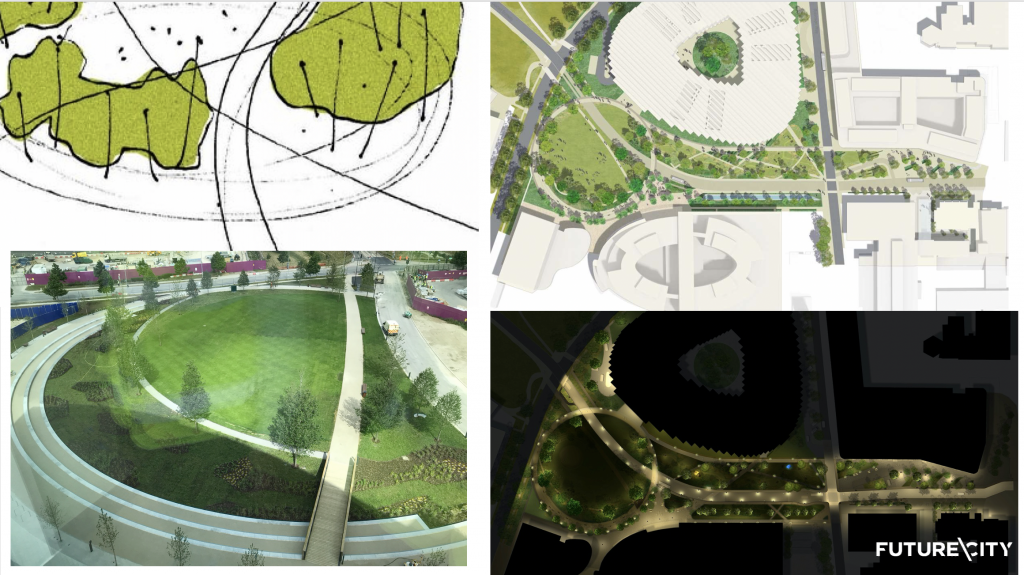
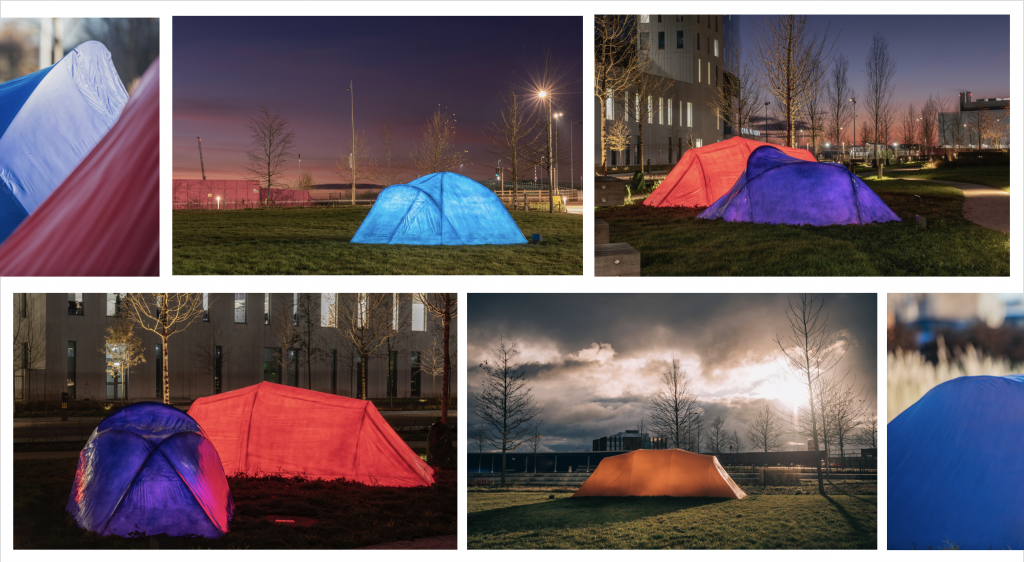
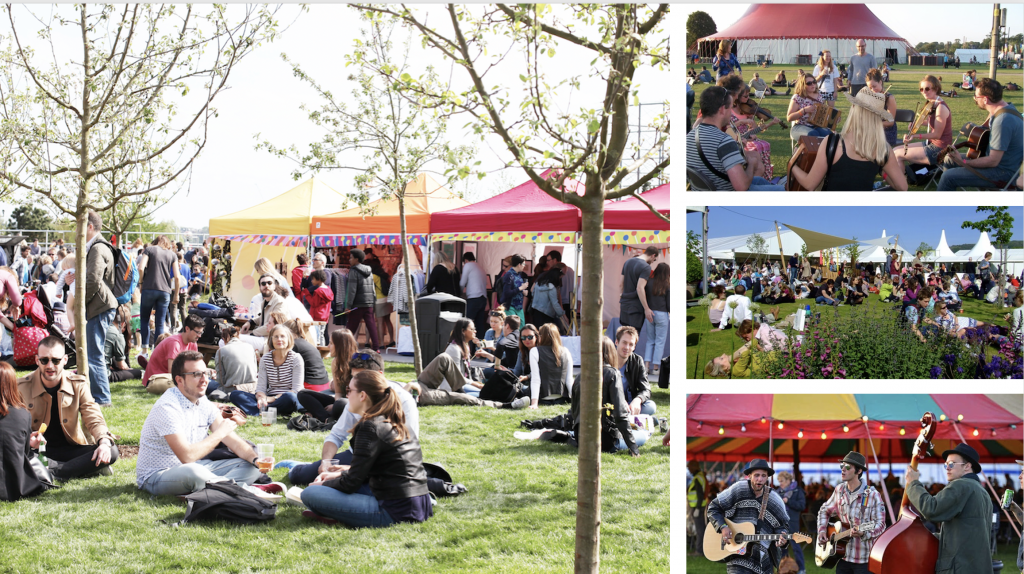
Science and Home
Life inside the campus’ organisations has been stimulated over the past 7 years with artists working ‘in residence’ alongside staff and patients. These included performance company 30 Bird and art+architecture company public works collaborating with the Medical Research Council’s 600 staff at the Laboratory of Molecular Biology. ‘Home in the Service of Science’ was an 18-month collaboration that enabled the staff to see new ways of engaging public audiences and illuminating their own work to colleagues and wider groups.

Flowers and Hospitals
In 2017 we supported Royal Papworth Hospital Trust to commission Lucy Steggals as their artist-in-residence during their final year at Papworth Everard, the much-loved home, to celebrate the location and heart felt relationship to place felt by everyone on site. Lucy created ‘Florulary’, a project that explored the relationship between the hospital and flowers. Since the mid-90’s NHS hospital wards have not allowed real flowers, but their gifting to recovering patients holds long tradition. The project created playful ways to reintroduce the floral into the hospital environment: photo shoots with staff, patients and visitors with yellow roses, alliums, lavender and chamomile, and workshops with young people in the Cystic Fibrosisward creating floral imagery via projections, tattoos, socks and puzzles, and resulting in gifts of bespoke floral bedding which the patients co-designed. The project brought together Papworth’s rich history and heritage with contemporary day to day life, at a pivotal point of change.
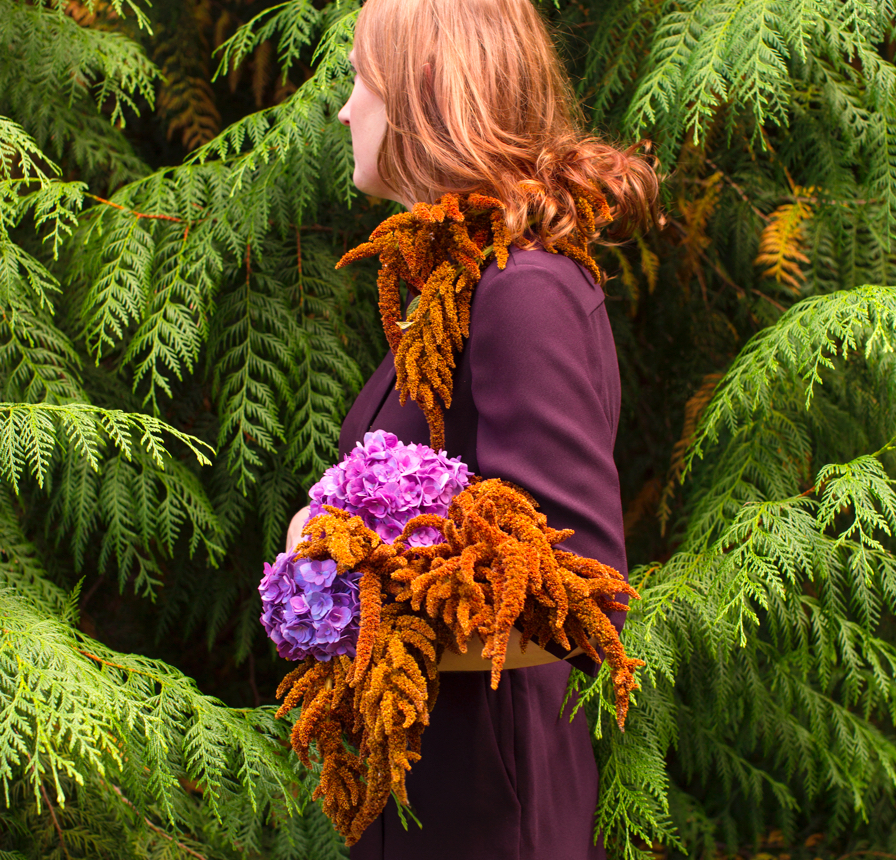
Poetry and Gaming
More recently, artists Hannah Jane Walker and David Blandy have excelled themselves as virtual ‘artists-in-residence’, working completely online during the pandemic to bring creativity and play to staff across the campus at this difficult time.
Hannah Jane Walker’s Making Visible project brought together researchers from 7 campus organisations to discuss their pains and pleasures and share their experiences together, from which they have created neon artworks of key phrases that resonate with everyone on the campus and beyond as we try to do our best in situations unknown. The artworks will tour the campus over the coming few years before finding a permanent home on site. David Blandy’s Lost Eons has enabled participants to create a new role-playing game, imagining the campus in the distant future, where present day is their archaeology, and a world of hybrid lifeforms and systems can be played out to the edge of imaginations. The game will be gifted as box sets across the campus for future generations to enjoy.

Royal Papworth Hospital
The CBC expansion has attracted new headquarters for world leading institutions such as the Medical Research Council Laboratory of Molecular Biology, AstraZeneca, and Royal Papworth Hospital.
Royal Papworth is a particularly historic move from its original 1918 home at Papworth Everard in the Cambridgeshire countryside to a purpose-built state of the art facility at the heart of CBC. Working with lead contractor Skanska, architects HOK, and a dedicated team of Papworth’s senior staff, Futurecity conceived a New Papworth Hospital Arts Strategy to embed contemporary art commissions into the fabric of the new hospital’s treatment and recovery spaces. The aim: to support a healing environment for staff, patients, and visitors.
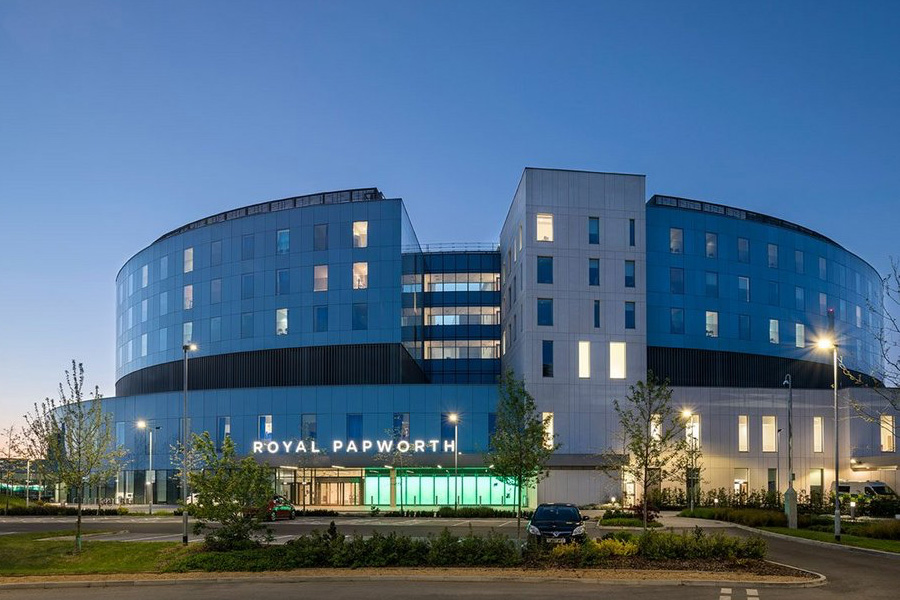
Collaboration was again key to the process. Royal Papworth Hospital is the UK’s largest specialist cardiothoracic hospital and the country’s main heart and lung transplant centre treating over 22,400 inpatient and day cases and 48,400 outpatients each year from across the UK. I pulled together the architects, engineers, project managers, clinical and operational staff – all strategizing and delivering a complex state of the art facility befitting of Papworth’s world-renowned service. The opportunity: to embed art within the fabric of the new hospital to directly support staff and patient respite and wellbeing. The process: a fantastic steering group once again, engaging 4 artists who worked tirelessly with tight budgets and timeframes to deliver sensitive, insightful artworks.
Seasonal welcome
Adam Ball joined the journey from the outset, collaborating with architects HOK on the two main hospital entrances. His two 3mx16m programmable LED lit glass façades, patterned with scans of 1-1 scale hand-cut fabrics, were inspired by his collaborations with staff from surgery, pathology and pharmacy. Together they welcome visitors with their seasonally responsive colours. Titling the artworks Until the day you feel good, Adam collaborated with renowned French colour expert, Jean Gabriele Causse. The impact of colour on wellness is well documented, and through their collaboration, the illuminated colour panels transition imperceptibly through the seasons to mark the passing of time.
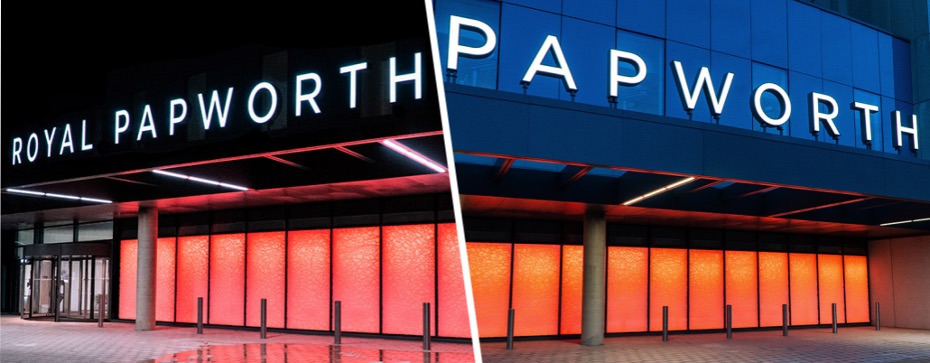
Embracing land and sky
Inside Royal Papworth, Sigune Hamann used chemical photography and her direct engagement with the Cambridgeshire landscape surrounding the original Papworth Hospital site to capture its unique beauty that contributed to Papworth’s pioneering heritage as the world’s leading heart and lung hospital. Working with specialist fabricators, she created an 80-metre panoramic landscape filling the new hospitals outpatients waiting room. This was accompanied by intimate floating sky circle light boxes and dioramas embedded into interior walls and glazing to support staff and visitor wellbeing. Moments of distraction and optimism for staff and visitors from the many moments of intensity.

An artwork for every room
Papworth Inpatients service provides 192 single occupancy bedrooms that use the latest technology and design to deliver 24hr pre- and post operative care. Artist Stefanie Posavec answered our brief to create an individual artwork for every room. Stefanie focuses on non-traditional representations of data, and for Papworth she focused on the patterns found both inside the body and outside in nature: waveforms in heartbeats and ocean waves, branching in the lungs and in trees, and flowing patterns in blood flow and in rivers. Working with digital developer Mike Brondbjerg, Stefanie used heart and lung data from Papworth patients and staff as a ‘seed’ to create a unique artwork for each room that incorporated the natural patterns of flowing, branching, and waveforms into each design. Beautifully rendered as manifestation on every glass entrance, the artwork brings calm and intricate detail into every bedroom.

Navigating a new facility
At Papworth we encouraged an arts led approach to wayfinding and signage. Design agency Thomas Matthews won the commission to balance NHS standards and guidelines with a creative response to the projects strategic concept of the “living building”. Their research around body and earth frequencies explored the natural pulses of the brain, the heart, our breath, the sea, the land and the earth as a basis to create a pattern and colour library and full interior wayfinding across public and staff only spaces. The work was able to respond to the other arts commissions and help tie them together.
Cancer Centre at Guy’s Hospital Public Art Programme (2012-2016)
In 2012 we developed a full arts strategy for the new Cancer Centre being designed by Rogers Stirk Harbour + Partners and Stantec at London Bridge. We worked closely with both practices to embed the arts into the fabric of the design, responding to the concept of stacked ‘villages’, clustering each of the hospitals service departments. 5 major arts commissions were developed and delivered in full alongside smaller projects and student competitions, bringing together design, engineering, clinical and operational staff with patient representatives to engage and steer the artists. The project won a 2017 European Healthcare Design Award for Interior Design and the Arts.

Honouring Heritage
The London Bridge area is steeped in history and archaeology. Five metres beneath the centre lies a Roman boat (AD 190-225). In response, artist Daniel Silver’s beautiful 3-metre-long bronze ‘Boat’ greets visitors and passers-by on Great Maze Pond as a permanent homage to this unique piece of history.

A warm welcome
As you enter the hospital you are greeted by a large welcoming space made more intimate by embedded coloured screens and seating, enveloping a large hand-made ‘kitchen’ table evoking the informality of gathering for a cup of tea and a chat. Gitta Gschwendtner’s ‘Genius Loci’ commission brought these domestic and design details into the Welcome Village to help patients and visitors feel at ease with the space able to pause and take time to talk to staff and move on through the building.
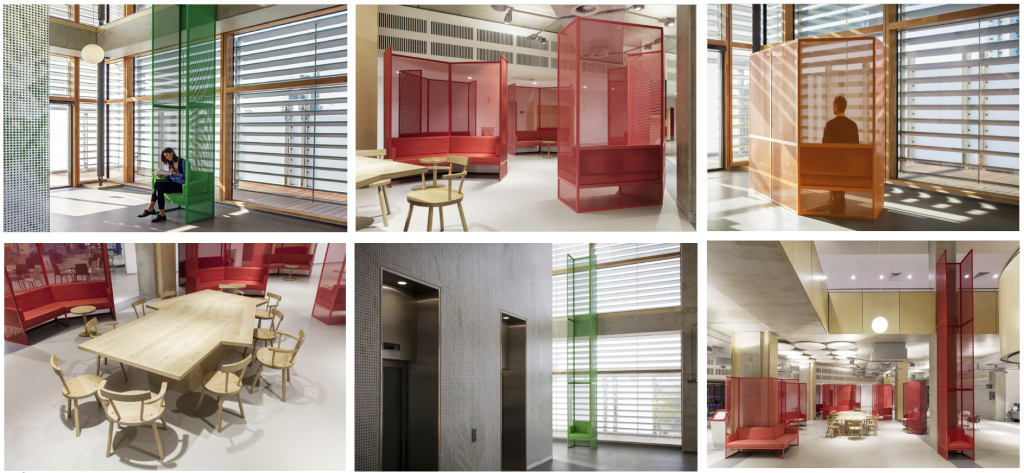
Accompanying your journey
Making your way through the centre, you’re greeted by 3 different artworks. As you stand waiting for your lift, you notice that the double height wall in front of you is actually a mountain. Inspired by Thomas Mann’s The Magic Mountain, artist Karel Martens covered the lift lobby walls in fragments of mountain landscapes, using the artist’s signature technique of transforming images into patterns of coloured pixels. Acclaimed design consultancy Pentagram art directed this graphic piece.
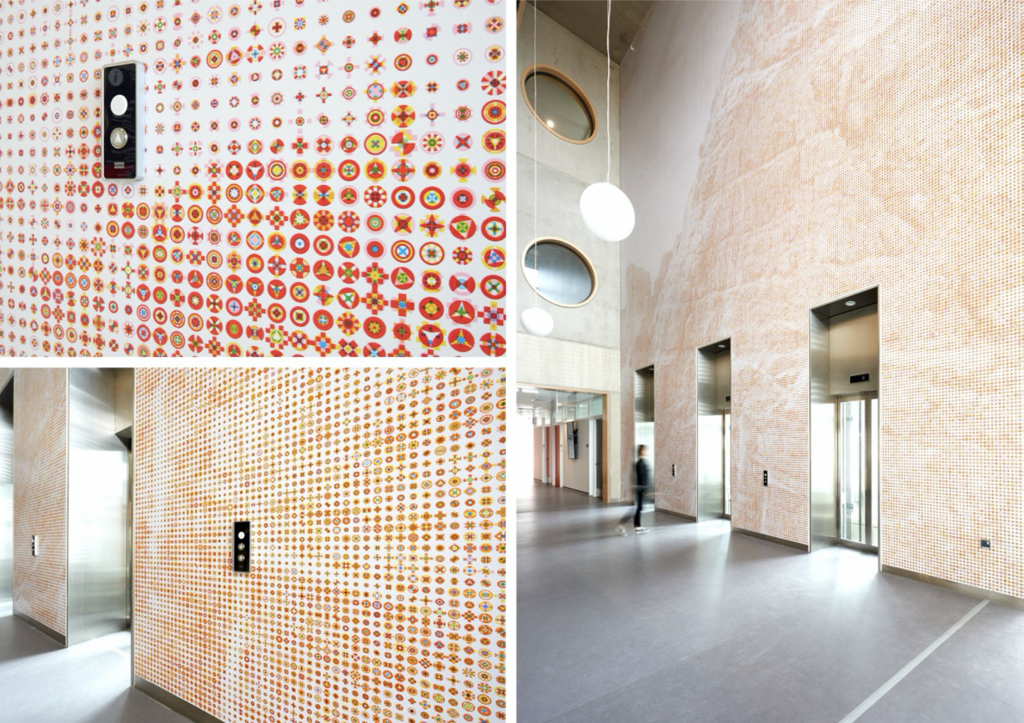
Meanwhile the light around you is subtly changing through the atria. Artist Andrea Bulloch created ‘Radiance’, clusters of light that hang throughout the centre performing ‘visual music’- projections of coloured light across the vast spaces. Each cluster matches and shifts from its corresponding Village colour in a harmonious wave action. For one minute every hour, on the hour, nine shades of blue pass through the clusters. Whenever the clusters turn blue, it is a reminder of the passage of time.

As you enter the lift and select your floor, your vertical journey through the centre is accompanied by a vertical journey of the same speed through the Amazon rainforest canopy. Invoking the internal growth patterns of a stable rainforest as a parallel to the dense ‘urban jungle’ of Central London, artist Mariele Neudecker takes you from deep in the forest floor through the dense layers of forest, to above the jungle canopy. The three video and sound recordings were captured from a 120ft observation tower at the Tiputini Biodiversity Station, a scientific research centre in the Ecuadorian Amazon – one of the most biodiverse forests in the world. A symbol of vibrant health and resilience.

Finally, a nod to a Futurecity project back in 2007: Ellesmere House Care Home in Chelsea, London. Artist Ekkehard Altenburger was commissioned by Taylor Woodrow Developments to design 2 sculptures, as focal points for a new garden, designed for patients with dementia and Alzheimer’s. The artworks entitled ‘Dopplereffect’, consist of marble and resin paint and consist of a standing 2.3 m sculpture and a fountain, both of which invite patients to touch and interact with the work. The nursing home and day centre was designed by HLM Architects, comprising a 3-level courtyard, with upper levels incorporating private apartments.
Conceiving and delivering this arts & health work has involved massive collaboration. I’d like to extend gratitude to all the participating hospital trusts, partnering developers, building contractors, architects, landscape architects, engineers, site contractors and technical teams, without whom none of this would have been possible. And at the heart of it all, the artists who took on the projects, and the staff and patients who contributed so much time, insight and experience to keep every project seeking to do better right through to completion. Thank you. The connection between arts and science is greater than we ever imagine, and our health and wellbeing made so much the better for embracing this layered and integrated relationship.

